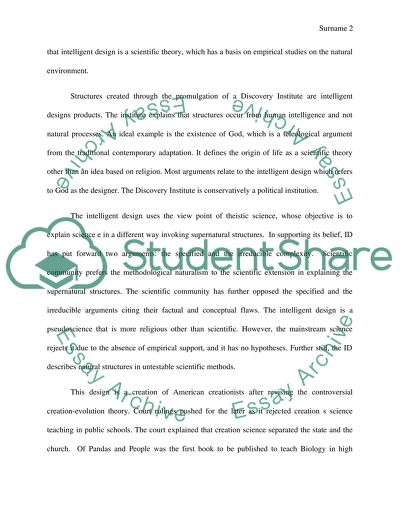Cite this document
(Is Intelligent Design a Scientific Theory Essay Example | Topics and Well Written Essays - 1500 words, n.d.)
Is Intelligent Design a Scientific Theory Essay Example | Topics and Well Written Essays - 1500 words. https://studentshare.org/science/1594896-is-intelligent-design-a-scientific-theory
Is Intelligent Design a Scientific Theory Essay Example | Topics and Well Written Essays - 1500 words. https://studentshare.org/science/1594896-is-intelligent-design-a-scientific-theory
(Is Intelligent Design a Scientific Theory Essay Example | Topics and Well Written Essays - 1500 Words)
Is Intelligent Design a Scientific Theory Essay Example | Topics and Well Written Essays - 1500 Words. https://studentshare.org/science/1594896-is-intelligent-design-a-scientific-theory.
Is Intelligent Design a Scientific Theory Essay Example | Topics and Well Written Essays - 1500 Words. https://studentshare.org/science/1594896-is-intelligent-design-a-scientific-theory.
“Is Intelligent Design a Scientific Theory Essay Example | Topics and Well Written Essays - 1500 Words”. https://studentshare.org/science/1594896-is-intelligent-design-a-scientific-theory.


